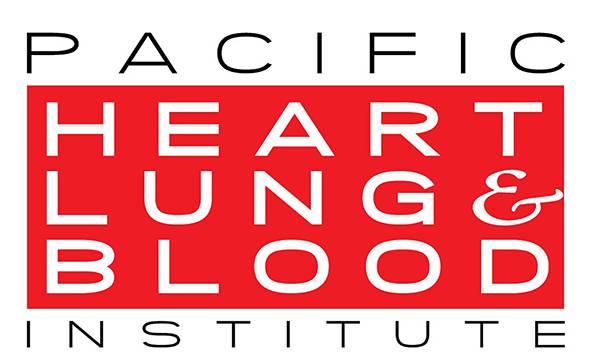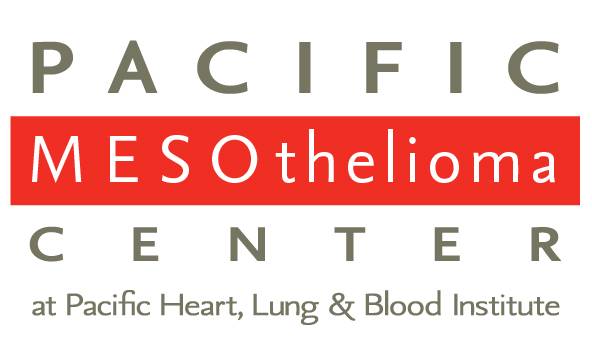HomeDivisionsBlood DisordersArtificial blood
ARTIFICIAL BLOOD SUBSTITUTES
– Update on the Promise of a Medical Breakthrough –
Blood substitutes — also called oxygen therapeutics or hemoglobin-based oxygen carriers (HBOCs) — offer the promise of new and important life-saving medical treatments.
Blood is a vital, life-sustaining fluid that picks up oxygen in the lungs and then carries it to the heart and the rest of the body. Blood performs many functions such as transporting nutrients from the digestive system, removing toxins and waste, and fighting germs.
Blood is composed of a watery substance called plasma as well as three different types of cells or parts of cells that float in the plasma. The formed elements are red blood cells (RBCs), white blood cells (WBCs), and platelets.
White blood cells are part of the body’s immune system that destroys viruses and bacteria, the pathogens that cause infections. Platelets form clots to prevent bleeding from cuts and small wounds. RBCs account for more than 90% of the formed elements in the blood.
These abundant cells transport oxygen and carbon dioxide via blood vessels called arteries and veins. RBCs are disc-shaped with a large surface area for absorbing and releasing oxygen.
These cells do not have a nucleus in the center, but instead contain a complex molecule — hemoglobin (Hb) — that collects and releases oxygen.
BLOOD TRANSFUSION
If a patient looses too much blood during a traumatic injury or a surgical operation, he may need a blood transfusion. Despite the nation’s numerous blood banks, there is a critical shortage of human blood available today for medical purposes. Nearly 33% of Americans will need a lifesaving blood transfusion at some point in their lifetime.
With 4.5 million Americans receiving blood transfusions each year, the number of patients requiring blood is now outpacing the number of blood donors. Although the American blood supply is generally safe, small amounts of the blood stored in blood banks may be contaminated with HIV and hepatitis virus.
LIMITATIONS
Human blood has other limitations as well. It must be stored at a cool temperature and it has a shelf life of only 42 days. For these reasons, blood may not be readily available when needed in an emergency situation — on the battlefield or in an ambulance transporting an injured, bleeding patient to the hospital.
The need for safe artificial blood is even greater for many people outside the United States. In sub-Saharan Africa, for example, blood loss accounts for an estimated 44% of women who die in childbirth. In many countries in the Developing World, blood is not screened for infectious pathogens that cause HIV, hepatitis, and syphilis.
ARTIFICIAL BLOOD ADVANTAGES
Artificial blood has several advantages over human blood. Because blood substitutes belong to the universal blood group O negative, they can be given to patients regardless of their blood type. Patients administered artificial blood will not experience immunologic reactions, but they would face serious health problems if they received incompatible donated blood.
When blood substitutes are manufactured they can be sterilized to destroy bacteria and viruses. This eliminates the risk for infectious diseases in a blood transfusion – a major issue in many parts of sub-Saharan Africa. With a longer shelf life than human blood, some blood substitutes can be stored for one to three years without refrigeration.
Artificial blood can be safely shelved outside hospitals and then rapidly administered to patients in emergency situations. Also, patients whose religious beliefs prevent them from accepting blood from donors would benefit from blood substitutes such as PFCs that are not derived from blood products.
OXYGLOBIN
Oxyglobin is the only blood substitute approved for use in veterinary medicine in the United States and Europe. A safe and effective blood substitute is urgently needed for human blood transfusions in hospitals, at accident sites, and on battlefield filled with injured military workers. An efficient oxygen-transporting blood substitute for humans would also be an important therapy for aplastic anemia and swollen tissues in sickle-cell anemia.
Over the last three decades medical scientists have made some progress in the discovery of human blood substitutes. Currently, two main types of artificial blood products — hemoglobin-based oxygen carriers (HBOCs) and perflourocarbons (PFCs) — are either being tested or are already on the market for human use.
To be effective, a blood substitute has to function like hemoglobin in carrying oxygen to organs and cells inside the patient’s body. The problem, however, is that hemoglobin outside of RBCs is toxic. Pure hemoglobin injected into the body causes blood vessels to tighten, leading to high blood pressure, capillary collapse, and sometimes heart attacks, strokes, and death.
Without its RBC wrapping, hemoglobin can produce swelling and fevers. These unwanted side effects are one of the main reasons why blood substitutes made from hemoglobin are so difficult to make.
HBOCS AND PFCS
Pharmaceutical companies attempted to develop HBOCs (also called oxygen therapeutics) and PFCs starting in the 1980s and at first seemed to have some success. However, the results of most human clinical trials have been disappointing. A study published in 2008 the Journal of the American Medical Association summarized the results of 16 clinical trials on five different blood substitutes administered to 3,500 patients.
Those receiving blood substitutes had a threefold increase in the risk of heart attacks compared with the control group given human donor blood. However, a closer analysis of the results showed that some of the negative statistics were misleading.
The artificial blood products reviewed in this study varied in their benefits and risks, and some blood substitutes had very few serious side effects. The findings suggest that some blood substitutes may be safer and more beneficial than scientists originally thought.
SUMMARY OF KEY BLOOD SUBSTITUTES APPROVED, IN CLINICAL TRIALS, OR WITHDRAWN
|
Blood Substitute |
Blood Substitute Class |
Clinical Trials |
Approval |
| Fluosol-DA-20 | PFC | Clinical Trials completed in 1980s: Discontinued due to side effects | Approved in 1989;Withdrawn in 1994 |
| Oxygent | PFC | Phase Clinical III trials: Increased risk of stroke | No Approval; Phase III trials stopped |
| Perftoran | PFC | Completed (Russia) | Approved in Russia, Mexico |
| Oxycyte | PFC | Phase II Clinical Trials (traumatic brain injury) umderway in Switzerland and Israel | No Approval; Further research needed |
| PHER-O2 | PFC | Pre-clinical Trials umderway | No Approval’ Further research needed |
| Oxyglobin | HBOC | Trials completed by late 1990s: Canine anemia | Approved: Veterinary Medicine |
| Hemopure | HBOC | Completed (South Africa) | Approved (South Africa); May be withdrawn |
| PolyHeme | HBOC | Phase III Trial (U.S.): Increased side effects in treatment group; no difference in 30=-day survival rate | No Approval; Further research needed |
| MP4OX (Hemospan) | HBOC | Phase II Trials (U.S.): Raised oxygen levels without serious side effects | No Approval; Further research needed |
| Hemotech | HBOC | Phase I Trials: No toxicity | No Approval; Further research needed |
| Engineered Hemoglobin | HBOC | Preliminary studies: Minimal side-effects; good oxygen delivery | No Approval; Further research needed |
PERFLUOROCARBON (PFC) BLOOD SUBSTITUTES
Perfluorocarbons (PFCs) are totally synthetic artificial blood products derived from fluorine- and carbon-containing chemicals. They are chemically inert, but more effective than water or blood plasma in dissolving and absorbing oxygen in the lungs and then transporting oxygen throughout the body. PFCs remain in the bloodstream for about 48 hours. Because of their oxygen-dissolving ability, PFCs were the first group of artificial blood products studied by scientists. They are the first generation blood substitutes. Unlike the red colored HBOCs, PFCs are usually white. However, since they do not mix with blood they must be emulsified before they can be given to patients. PFCs are such good oxygen carriers that researchers are now trying to find out it they can reduce swollen brain tissue in traumatic brain injury. PFC particles may cause flu-like symptoms in some patients when they exhale these compounds.
Examples of PFC Blood Substitutes
Fluosol-DA-20
Fluosol-DA-20, manufactured by Green Cross of Japan, was the first and only oxygen-carrying blood substitute ever to receive approval from the FDA. Although approved in 1989, it was withdrawn in 1994 because it was cumbersome to administer to patients and it had side effects.
Oxygent
Oxygent, developed by Alliance Pharmaceutical Corporation in San Diego, is a PFC-based oxygen carrier currently approved for Phase II trials in both Europe and the United States. Oxygent initially showed promise for decreasing the need for donated blood during surgery. However, phase III trials were stopped recently because patients receiving Oxygent showed a higher risk of stroke compared to controls receiving donor blood.
Perftoran
Perftoran, sponsored by Moscow, Russia, is a PFC emulsion approved for human use in Russia in 1996. In 2005, the same drug was registered and approved as an authorized blood substitute for use in Mexico under the trade name Perftec, distributed by KEM Laboratory in Mexico.
Oxycyte
Oxycyte — a third-generation perfluorocarbon (PFC) therapeutic oxygen carrier sponsored by Synthetic Blood International in Costa Mesa, California — is designed to transport oxygen to damaged tissues and carry carbon dioxide to the lungs for removal. With an oxygen-carrying capacity up to five times that of hemoglobin, Oxycyte may be beneficial for traumatic brain injury, sickle cell crisis, heart attack, and wound care as well as for blood transfusion. It has been approved for Phase II clinical trials on traumatic brain injury in Switzerland and Israel, but more research is needed before it can be deemed safe and effective as a blood substitute.
PHER-O2
PHER-O2, developed by Sanguine Corporation in Pasadena, CA, is a PFC with oxygen-carrying capabilities and reportedly few side effects. This drug is now under evaluation not only as a blood substitute for transfusion, but also as a therapy for heart attack and stroke.
HEMOGLOBIN-BASED OXYGEN CARRIER (HBOC) BLOOD SUBSTITUTES
HBOCs are manufactured from sterilized hemoglobin and look somewhat like real blood. These dark red or burgundy colored blood substitutes are often made from RBCs of expired human blood, cow blood, hemoglobin-producing genetically modified bacteria, or human placentas. The artificial hemoglobin molecules are modified to create a sturdy structure and to function without the protective cover of RBCS. Through a chemical process called polymerization, two or more three molecules bonded together to form a larger HBOC molecule. HBOCs are smaller than natural RBCs. While natural RBCs remain in the bloodstream for about 100 days, HBOCs circulate in human blood for only a day. Side effects of HBOCs may include elevated blood pressure, abdominal discomfort, and a temporary reddish coloration of the eyes or skin.
EXAMPLES OF HBOC BLOOD SUBSTITUTES
Hemopure
Hemopure, sponsored first by Biopure Corporation and later by OPK Biotech, is currently used in hospitals in South Africa. This oxygen therapeutic drug was approved by the Government of South Africa because of the country’s widespread HIV contamination of the blood supply. However, it recently has been targeted for removal from the market in South Africa. Hemopure is made from chemically stabilized, cross-linked cow hemoglobin using a fairly simple and less expensive biotechnology than required for other HBOC blood substitutes. Its minute size – not more than 1/1000 the size of RBCs – is advantageous for transporting oxygen into small spaces between cells. Compared to human donor blood, Hemopure delivers oxygen more quickly to target areas of the patient’s body.
PolyHeme
PolyHeme, sponsored by Northfield Laboratories in Chicago, is a first-generation polymerized hemoglobin-based oxygen-carrying hemoglobin solution. It was developed after the Vietnam War for emergency treatment in trauma situations of blood major loss. In the mid-2000s Polyheme was compared with donor blood in a clinical trial of more than 700 people in a US Phase III Trial. Patients receiving Polyheme had a slightly higher rate of negative side effects such as high blood pressure, inflammation, and multiple organ failure compared with the control group. (The small size of the PolyHeme molecule causes it to bind with nitric oxide, leading to constricted blood vessels.) However, here was no difference between the drug and control groups in the survival rate at 30 days. Although Northfield Laboratories has stopped manufacturing Polyheme, scientists and doctors working with this artificial oxygen carrier claim that more research is needed before its benefits versus risks can be conclusively determined.
MP4OX (Hemospan)
MP4OX (formerly known as Hemospan), sponsored by Sangart of San Diego, is a promising powdered form of artificial blood that can be mixed with liquid for transfusion. It is made from expired human blood combined with an added compound, polyethylene glycol, to minimize toxicity. With a capacity to enhance oxygen transfer
from RBCs to tissues, MP4OX is designed to supplement the body’s own ability to transport oxygen. Currently in Phase II trials in the United States, MP4OX effectively raised oxygen levels in patients without serious side effects.
Hemotech
Hemotech, produced by HemoBiotech in Dallas, TX, is a proprietary, chemically modified hemoglobin manufactured from cow blood. It was originally developed in 1985. With a shelf life of more than six months, if has shown no signs of toxicity in clinical studies. Hemotech is currently approved by the FDA for Phase I trials in the United States.
Engineered Hemoglobin
Scientists at the University of Essex in the United Kingdom are evaluating a new patent-pending engineered hemoglobin to serve as a blood substitute. The novel molecule is designed for optimal oxygen delivery. If successful, this innovative blood substitute could deliver a rich supply of oxygen to the tissues with almost no toxicity to the body.
THE FUTURE OF BLOOD SUBSTITUTE PRODUCTS
Although research on synthetic artificial blood has not yet led to an approved drug on the market today, considerable progress has been made since 1978 when the first clinical trial of an HBOC was conducted. New technologies that may yield blood substitutes for human use in the future include blood pharming (using stem cells extracted from umbilical cords) and nanometer-sized water-soluble dendrimers — highly branched, star-shape molecules — to make plastic blood. As scientists learn more about how natural RBCs function in the body, they will come closer to inventing a blood substitute for humans that has few side effects, an increased oxygen-carrying capacity, and a longer-lasting survival time in the human body.





